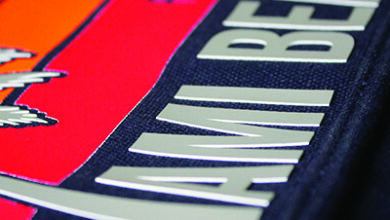This heat printing problem has become a recent trouble spot for decorators as the popularity of polyester and polyester blend garments has taken off. When your light-colored heat transfer vinyl (HTV) gets black spots on it after being applied to polyester or a polyester blend, or your white HTV turns pink when applied on a red polyester shirt, it’s not the HTV causing the issue.
This discoloration is caused by dye migration from your garment into the HTV. Heat during the application process can cause the dye in polyester to be released and bleed through HTV or plastisol inks when screen printing.
Garments like reversible jerseys and tri-blends with heavy polyester content are known as bleeders in the industry and require special care during the heat transfer process. There are a few ways to address this issue and keep your design looking like you intended.
To avoid dye migration, first, cool down your heat press. Dye migration only happens when polyester or polyester blend fabric is exposed to heat higher than 280 degrees F. Using a heat transfer material that applies at a lower temperature will often keep dye migration at bay.
Another option is a specially formulated heat transfer material designed to block dye migration using a charcoal liner, special heat transfer inks, or even silicone-based products. These products continue to be developed to handle today’s popular polyester garments.
One final option is to simply avoid applying light vinyl on dark-colored polyester garments. Sticking to dark HTV designs on lighter fabrics will hide any dye migration that may occur.
Test different heat transfer materials on polyester garments to find a solution that works for your specific situation.



